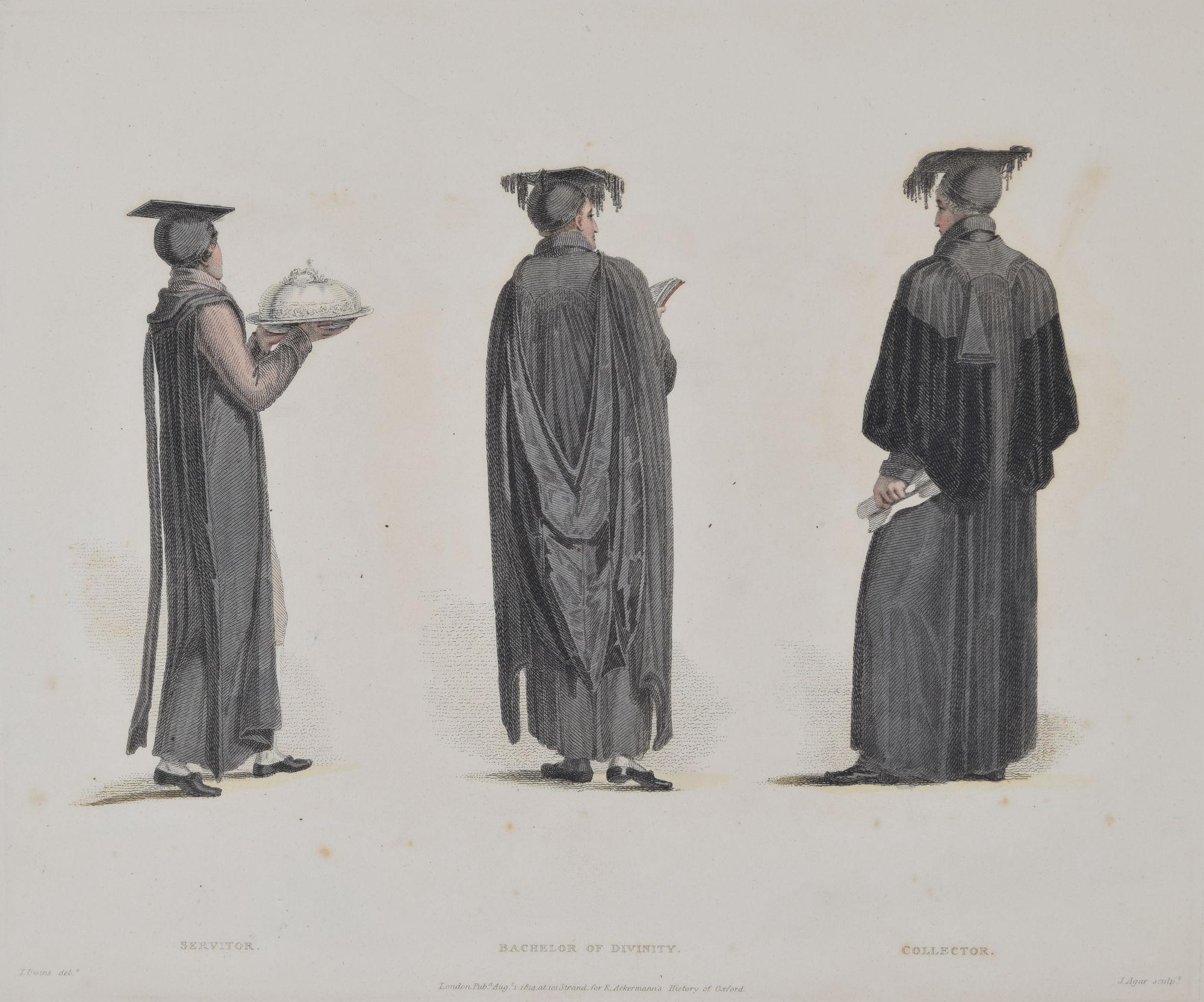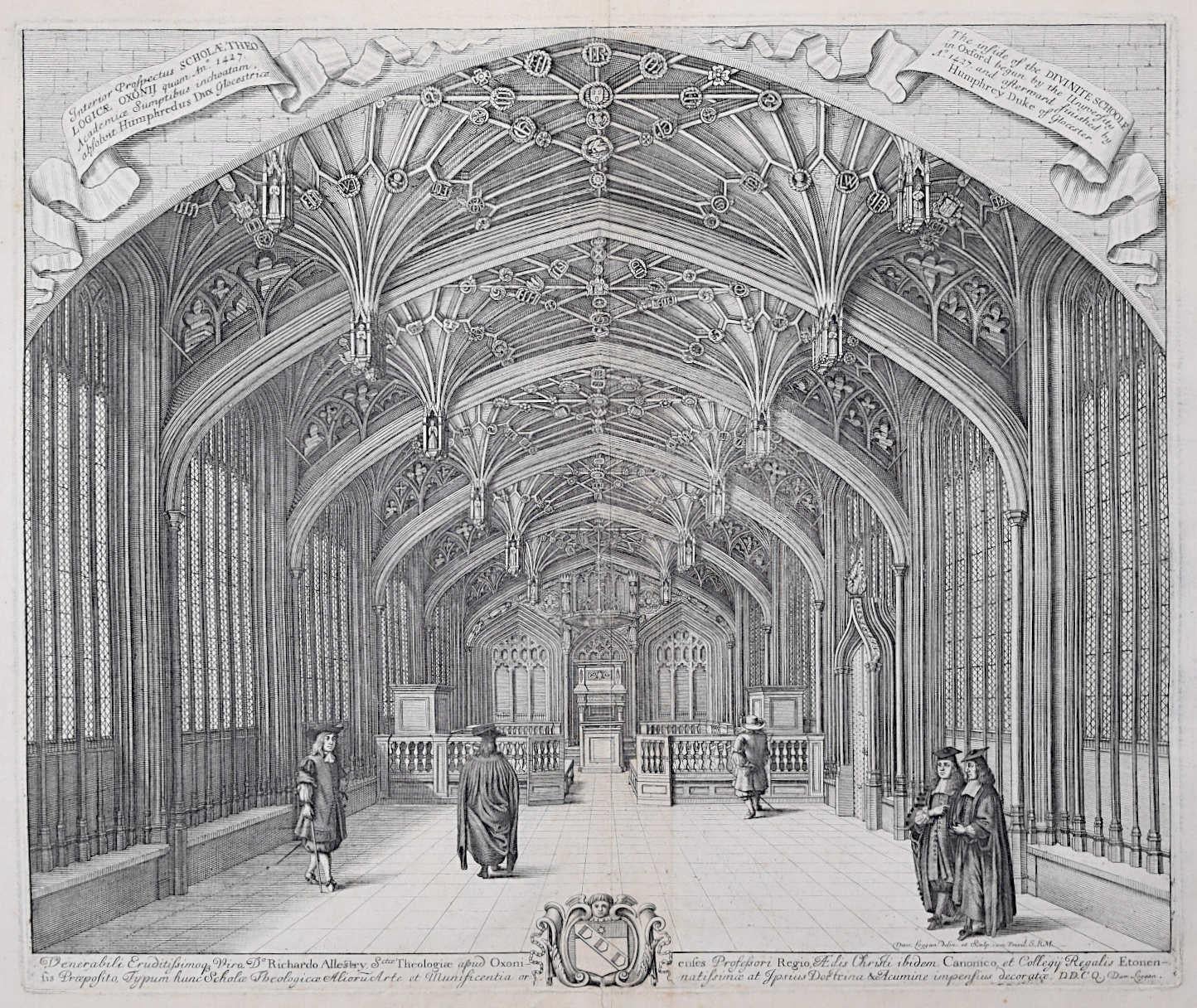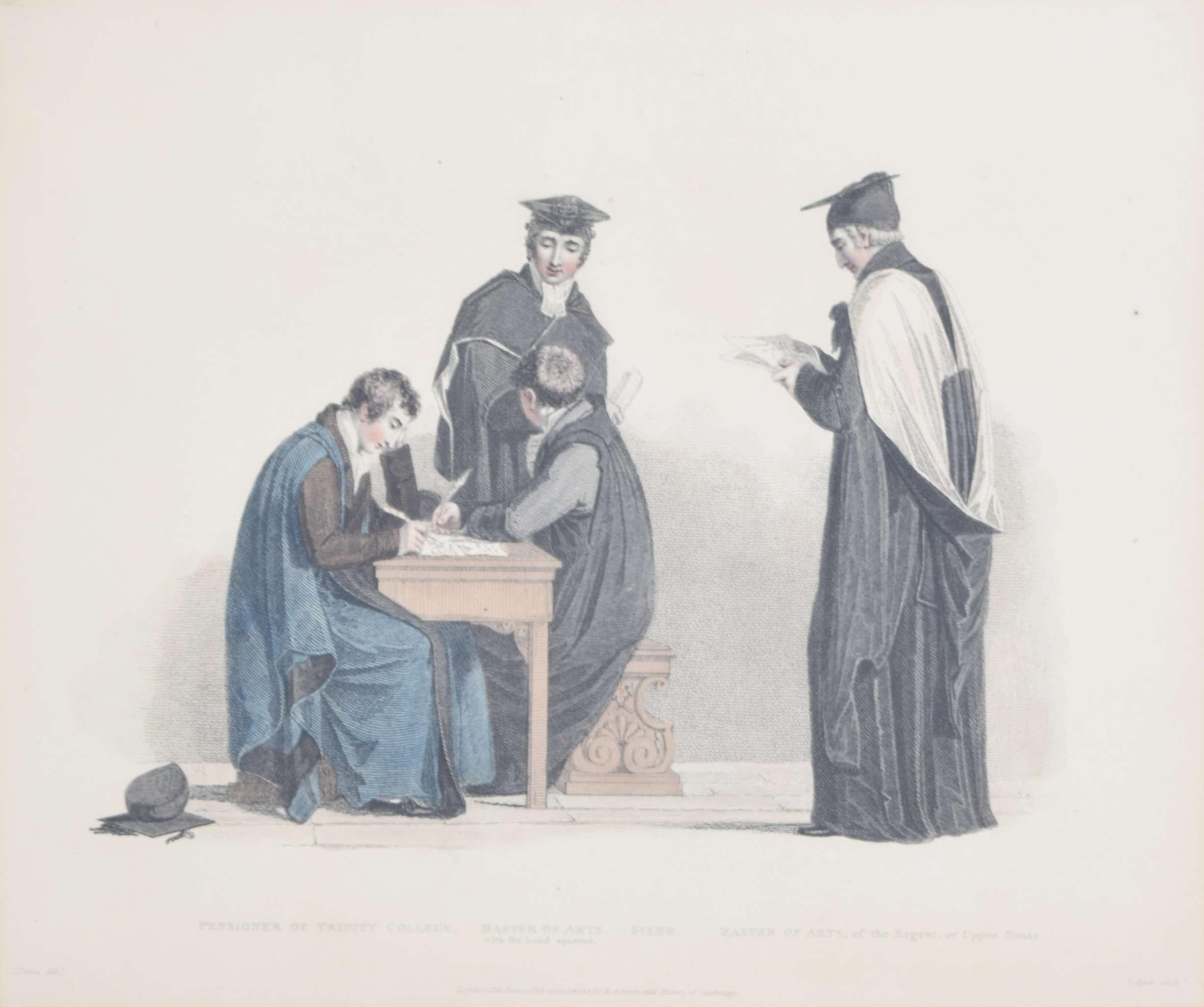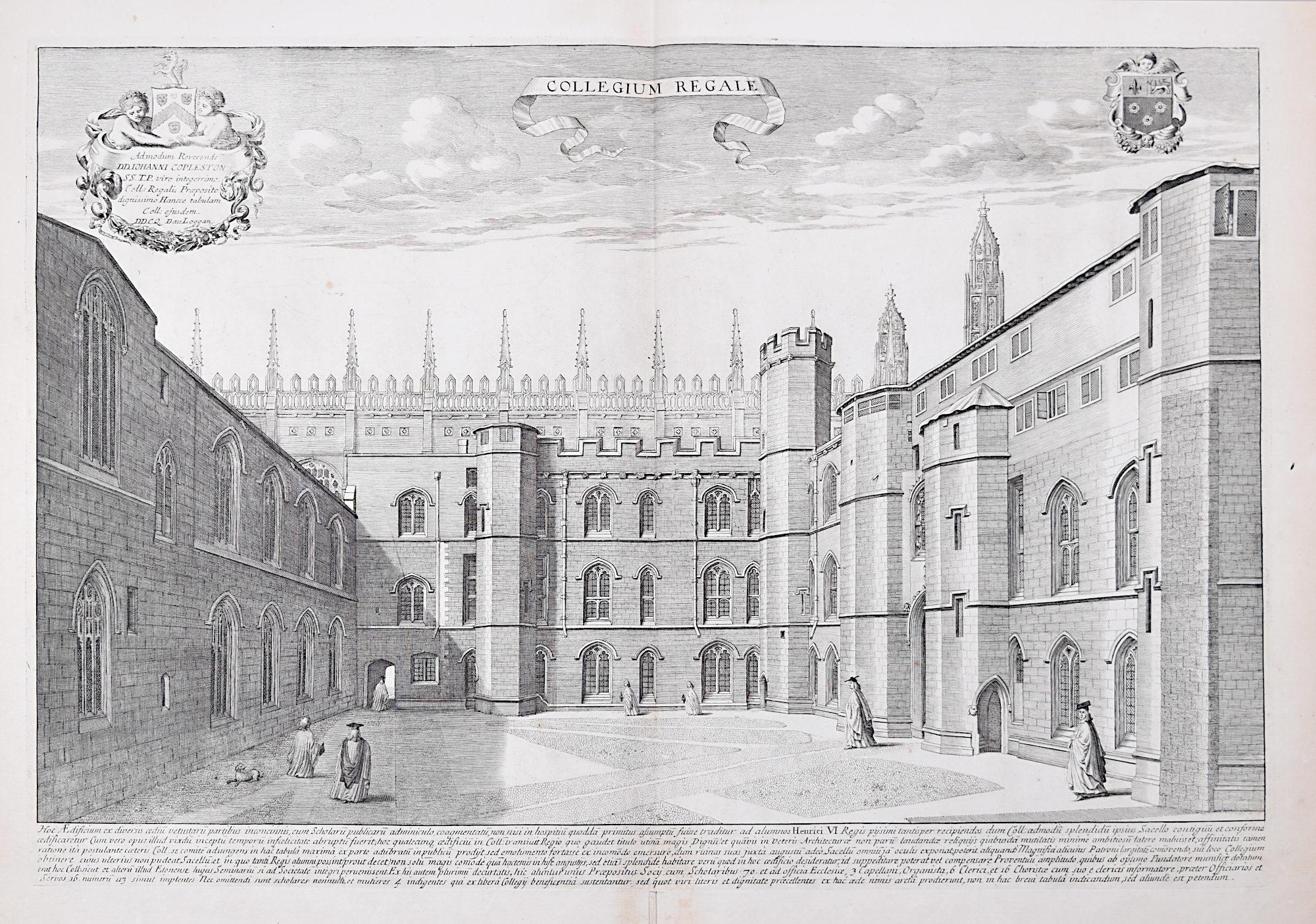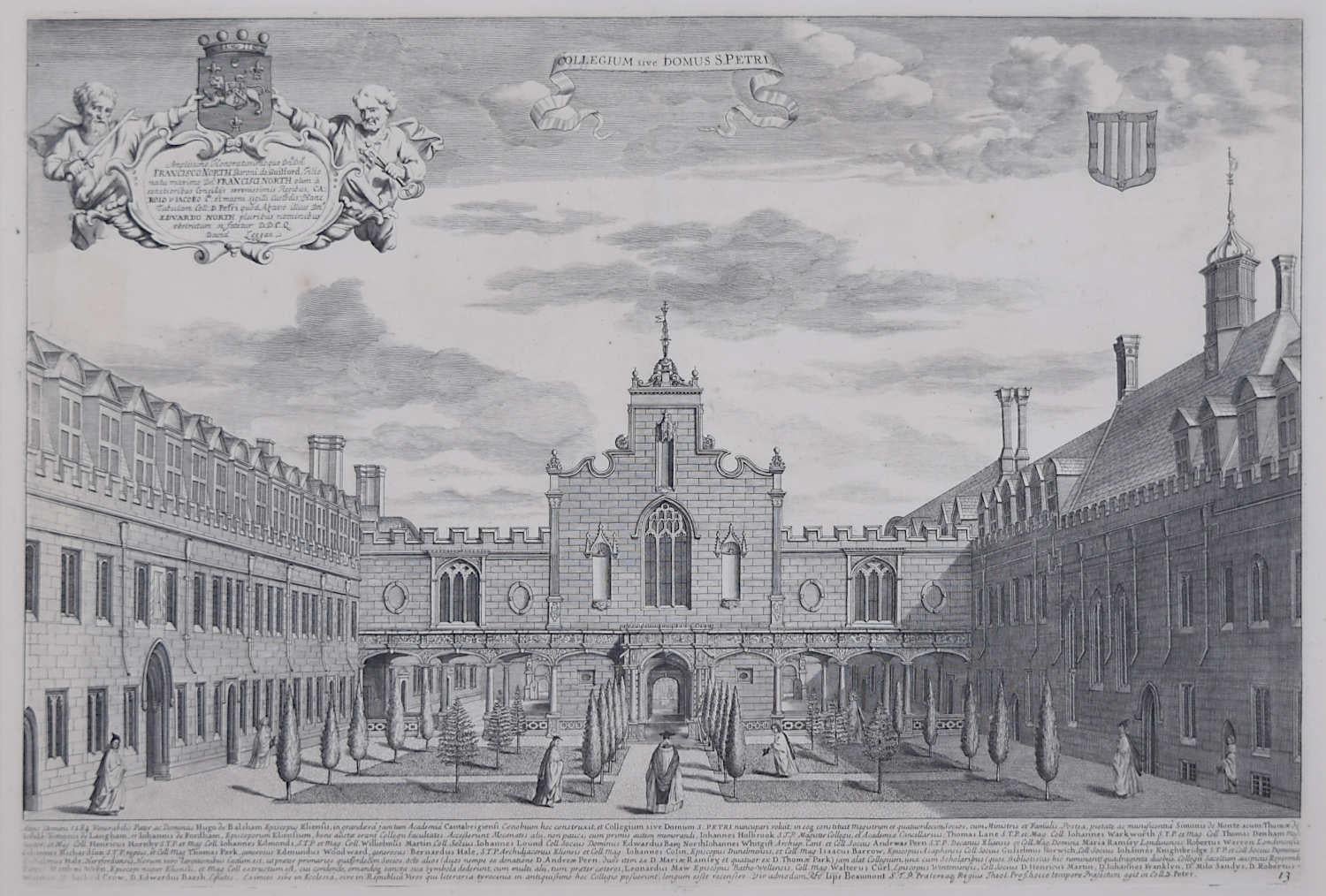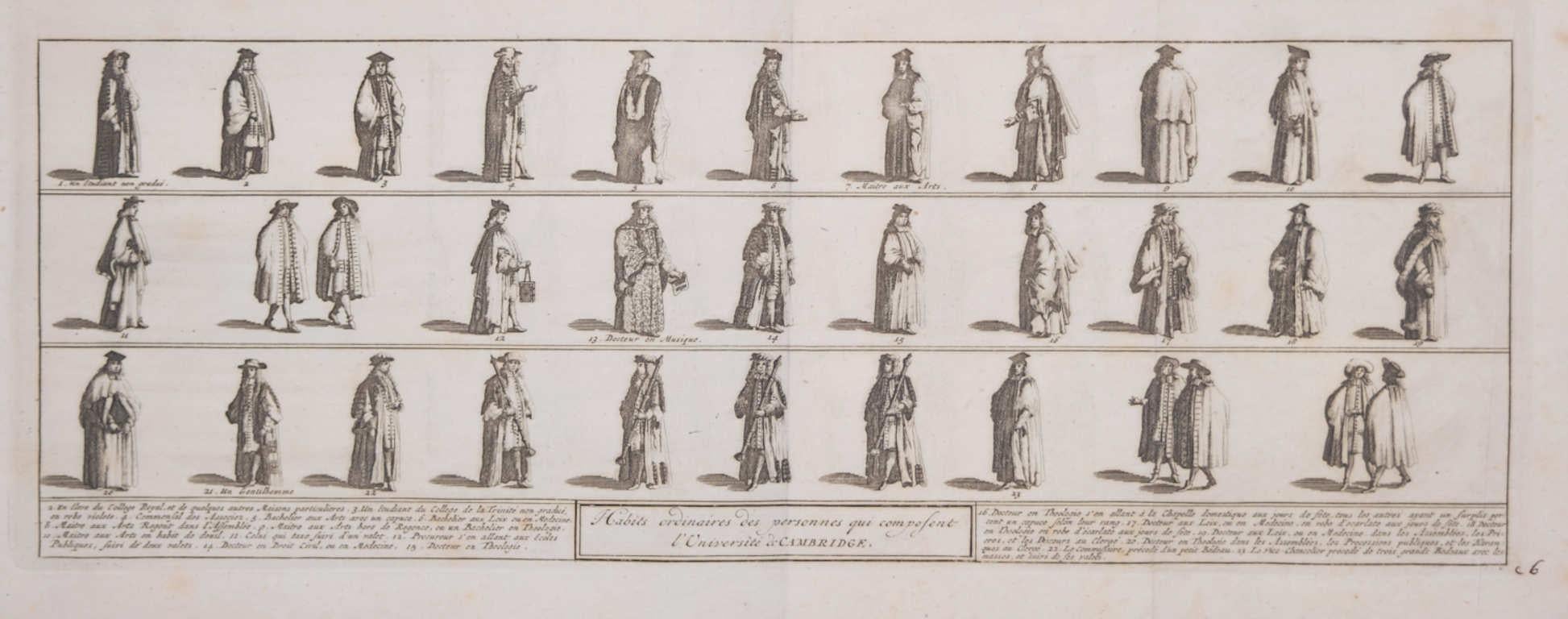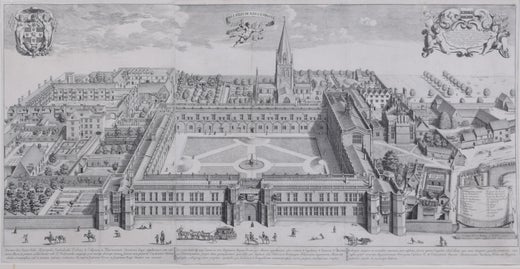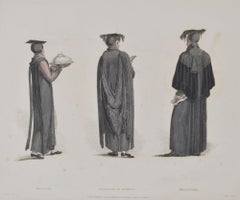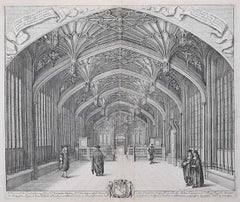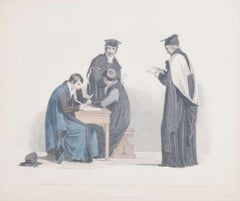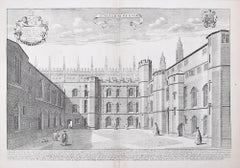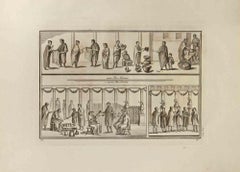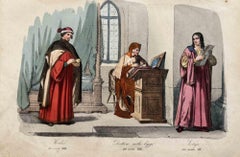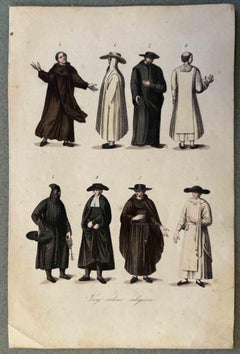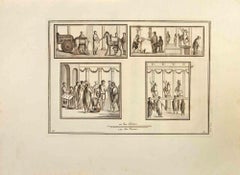David LogganDavid Loggan Engraving, Habitus Acamedici in Universitate Oxoniensi1675
1675
About the Item
- Creator:David Loggan (1634 - 1692, British)
- Creation Year:1675
- Dimensions:Height: 16.15 in (41 cm)Width: 19.69 in (50 cm)
- Medium:
- Movement & Style:
- Period:1670-1679
- Condition:Good; repaired tear approx 6" long bottom right towards centre; trimmed just within platemark to bottom, a few short edge tears, mostly 5mm or so.
- Gallery Location:London, GB
- Reference Number:1stDibs: LU795315494372
David Loggan
David Loggan’s parents were English and Scottish. He studied engraving in Danzig with Willem Hondius and moved to London in the late 1650s, producing the engraved title page for the folio Book of Common Prayer (1662). After marrying in 1663, Loggan moved to Nuffield, Oxfordshire, in 1665 to avoid the Plague and was in 1668–69 appointed as a public sculptor to the nearby University of Oxford, having been commissioned to produce bird’s-eye views of all the Oxford Colleges. He lived in Holywell Street as he did this. Oxonia illustrata was published in 1675, with the help of Robert White. Following its completion, Loggan commenced work on his equivalent work for Cambridge, Cantabrigia Illustrata, which was finally published in 1690 when he was made engraver at Cambridge University.
- ShippingRetrieving quote...Shipping from: London, United Kingdom
- Return Policy
More From This Seller
View All1810s Prints and Multiples
Aquatint
1670s Realist Prints and Multiples
Engraving
1810s Prints and Multiples
Aquatint
1690s Realist Prints and Multiples
Engraving
17th Century Prints and Multiples
Engraving, Etching
Early 18th Century Prints and Multiples
Engraving
You May Also Like
18th Century Old Masters Figurative Prints
Etching
1860s Modern Figurative Prints
Lithograph
1860s Modern Figurative Prints
Lithograph
18th Century Old Masters Figurative Prints
Etching
1820s Modern Portrait Prints
Etching
1860s Modern Figurative Prints
Lithograph
